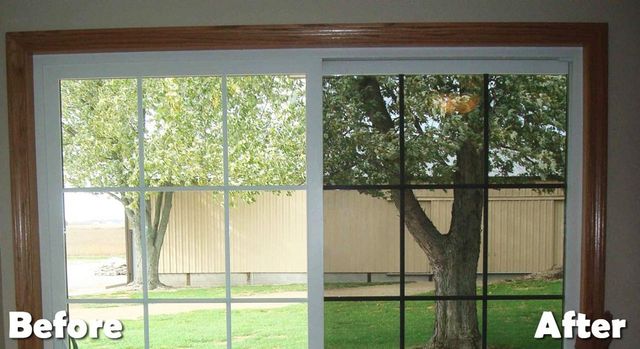Why Residential Window Tint is Perfect for Home Offices and Research Studies
Why Residential Window Tint is Perfect for Home Offices and Research Studies
Blog Article
How Residential Home Window Tinting Improves Your Home's Power Efficiency
Residential home window tinting provides an engaging remedy for homeowners seeking to improve power performance within their living spaces. By applying specialized films to windows, it effectively minimizes heat transfer, thus maintaining indoor temperature levels and decreasing the need for extreme heating or air conditioning.
Comprehending Home Window Tinting
Comprehending home window tinting is important for property owners seeking to improve both comfort and energy effectiveness in their home. Residential Window Tint. Window tinting includes the application of a thin film to the inside or outside surface area of glass home windows. This movie can dramatically modulate the quantity of sunshine and warmth that gets in a home, therefore influencing indoor environment problems
There are different kinds of home window tinting movies offered, each with distinct homes. The effectiveness of home window tinting is typically determined by its Visible Light Transmission (VLT) percentage, which shows exactly how much light can pass via the film.
Benefits of Energy Performance
Window tinting not just enhances aesthetic appeals however likewise plays a considerable function in enhancing power performance within property rooms. By lowering warm transfer via windows, colored films develop a more steady interior climate, which can bring about considerable decreases in energy usage for cooling and heating. This energy performance translates into reduced energy bills, offering home owners with substantial lasting financial savings.

Furthermore, home window tinting boosts the comfort of living spaces. By decreasing glare and blocking unsafe UV rays, colored home windows produce a more pleasant environment, which can lead to boosted wellness for occupants. The security against UV rays likewise helps preserve furniture and floor covering from fading, adding to the long life of family items.
Just How Tinting Works
Tinting movies operate with a combination of sophisticated materials and innovations designed to manage the amount of solar energy going into a home. Primarily made up of polyester, these movies typically include ceramic or metal fragments that show and soak up heat. This double capacity allows them to substantially reduce the penetration of ultraviolet (UV) rays and infrared radiation while allowing noticeable light to pass through.
The efficiency of home window tinting is measured by its solar warmth gain coefficient (SHGC), which suggests just how much solar power is transmitted with the home window. Reduced SHGC values are more effective as they denote greater warm being rejected. Furthermore, home window colors can feature a variety of shades, enabling property owners to tailor their aesthetic preferences while enhancing energy effectiveness.
Additionally, these movies work as an obstacle, preventing heat loss during colder months by mirroring indoor warmth back into the space. This thermal insulation result complements the air conditioning advantages obtained throughout warmer months, adding to a well balanced interior environment year-round. By taking care of solar power effectively, domestic home window tinting not just boosts convenience yet additionally plays an essential function in minimizing power usage and reducing utility bills.
Choosing the Right Tint

There are different types of home window movies readily available, consisting of dyed, metalized, and ceramic. Ceramic films offer outstanding warm control without endangering exposure and are extremely long lasting, making them a popular selection.
Visible light transmission (VLT) is an additional important element, as it suggests the amount of natural light that can travel through the tinted glass. Home owners ought to choose a tint with a VLT that complements their lighting preferences while still providing ample glow reduction.
In addition, assessing the solar warm gain coefficient (SHGC) can aid figure out just how well a color can obstruct heat from sunlight. click for more A reduced SHGC indicates far better heat control, ultimately improving power effectiveness.
Installation and Maintenance Tips
Proper installation and upkeep are vital elements in maximizing the benefits of domestic window tinting. Specialists also make use of specialized devices and strategies, which can enhance the sturdiness and effectiveness of the color.
Following installation, upkeep is crucial to prolong the life of the window movie. It is suggested to wait at least 30 days before cleansing the tinted home windows to enable the glue to heal fully.
Additionally, normal inspections are valuable. Examine for any type of peeling or bubbling, which can suggest inappropriate installation or wear in time - Residential Window Tint. Attending to these have a peek at this website concerns immediately can avoid more damages and preserve energy efficiency. By sticking to these installment and upkeep suggestions, property owners can ensure their home window tinting proceeds to provide significant power financial savings and comfort for many years to find.
Final Thought
In verdict, residential window tinting serves as an effective service for boosting energy efficiency within homes. By minimizing heat transfer and obstructing hazardous UV rays, home window movies add to decrease power intake and improved interior convenience.
Window tinting involves the application of a thin movie to the inside or outside surface of glass home windows. By minimizing warmth transfer through home windows, colored films develop a much more steady interior environment, which can lead to considerable reductions in energy usage for heating and cooling.The Your Domain Name performance of home window tinting is gauged by its solar heat gain coefficient (SHGC), which indicates just how much solar power is sent through the window. By managing solar energy efficiently, property home window tinting not only improves convenience yet likewise plays an important duty in decreasing energy consumption and reducing energy bills.
By reducing warm transfer and obstructing harmful UV rays, window films contribute to reduce energy intake and enhanced interior convenience.
Report this page